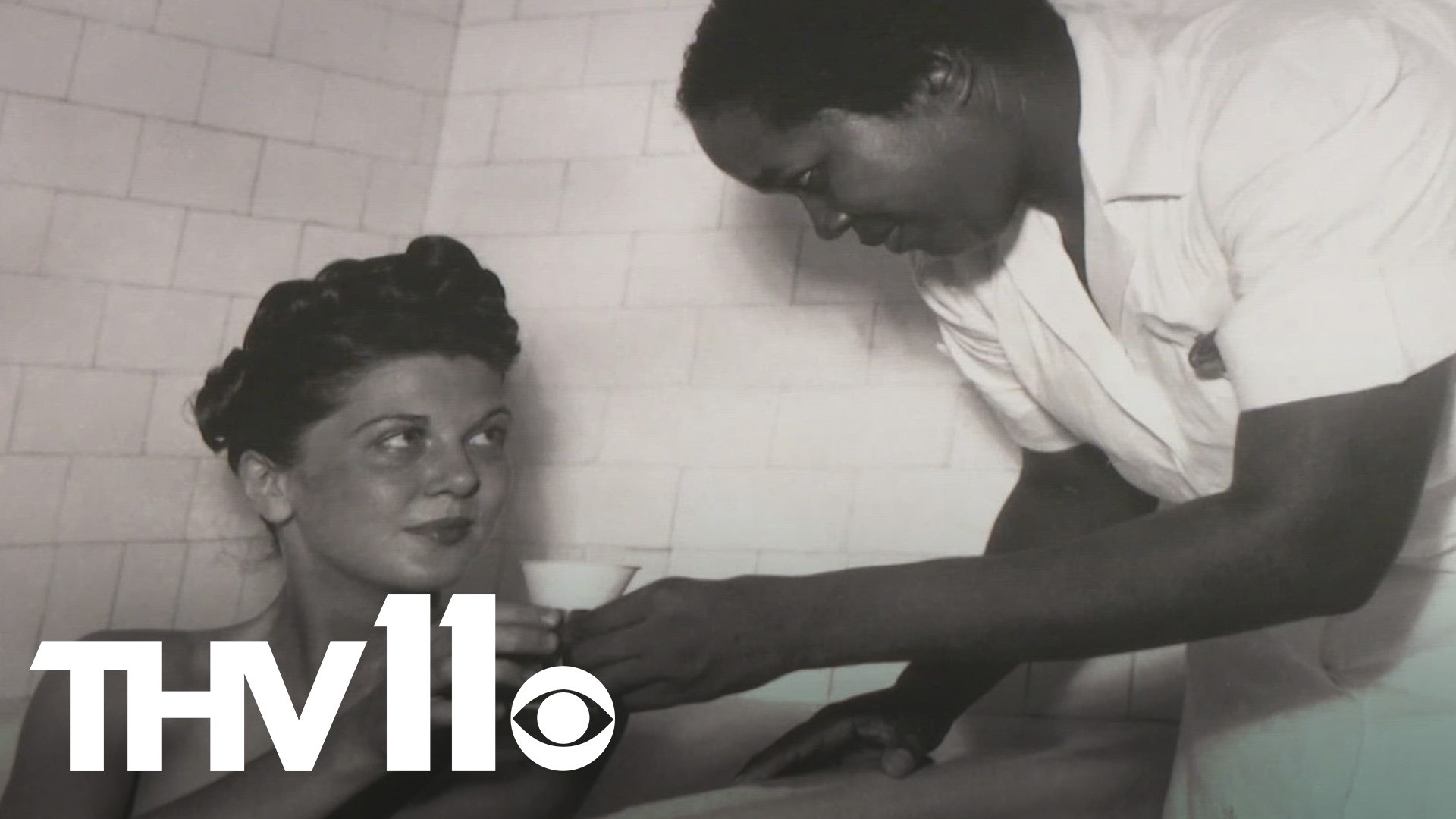HOT SPRINGS, Ark. — The origin story of Hot Springs' bathhouses and their success is crucial to the creation of the Hot Springs National Park (HOSP).
According to Dan Chmil, Interpretive Park Ranger & Historian at HOSP, bathhouse workers, many of them unknown, were the driving force that helped Hot Springs become a national attraction.
The late 1800s through the mid-1900s marked a time when visiting Bathhouse Row in Hot Springs, Arkansas meant coming to the country's premier health destination.
“Folks have come for the healing properties of the water for centuries,” Chmil explained.
Today, Bathhouse Row looks and serves as something different— a national park. But stepping through the doors of the Fordyce Bathhouse is like entering a time capsule.
“We have eight bathhouses here on Bathhouse Row, but Fordyce is the only one where the interior and exterior have been kept intact the way as when it first opened,” described Ashley Waymouth, HOSP Interpretation Program Manager.
To Waymouth, these bathhouses were temples of hope during their heyday.
“People came here desperate,” Waymouth said. “They came here looking for healing, for something they couldn't find anywhere else in the country.”
Restorative thermal water was the rare prize that awaited people looking for care.
“To come to a place where turning a faucet meant hot mineral water came shooting out was beyond unique,” Chmil added. “It was a national treasure.”
People traveled thousands of miles to the bathhouse mecca in the Spa City to seek out relief from things like rheumatism, migraines, or leprosy.
The mostly white customer base received their care from African-American bathhouse attendants.
“The thermal water was used medicinally. for years, decades, almost centuries,” Chmil said. “So, the bathhouse attendants needed specific medical knowledge attached to the bathing experience.”
Attendants were the backbone of bathhouses as they provided rigorous and highly sought-after care to only white customers.
Bathhouse success at that time was undeniable, making these African-American attendants a crucial piece of the bathhouse advancement.
Chmil said the healing and success of Bathhouse Row wouldn't be possible without them. He added that many of the men and women took a seemingly impossible situation and thrived.
“Many of them were born enslaved and came here for an opportunity not only to make a living, but really build a reputation here in town,” Chmil explained
Bathhouse attendants became necessary, all amid Jim Crow and heightened racism.
“Their experience made them so foundational to the bathing experience,” Chmil said. “They were needed.”
On top of the pain from the outside world, the job itself was no walk in the park.
“These men and women put in hours of intense labor,” Chmil described. “During the peak seasons, bathhouse attendants were giving 30 to 40 baths a day, conditions were hot, humid. Folks worked seven days a week, every single day.”
However, the attendants made it possible, successfully. For decades, their work paired with the restorative thermal water brought in thousands, and even returning clientele.
“People were going to the exact same bathhouse, and they wanted the exact same employee to work with them, that wording is important,” Chmil said.
According to Waymouth, the bathhouse attendant’s reputation wasn’t more than ordinary people doing their jobs. However, they built something long-lasting.
“They showed up to work every day and did their jobs,” Waymouth said. “In doing so, they were transforming history and creating a national park.”
Unfortunately, most good things must come to an end. After World War II, the bathing industry started to die off.
“The same big industries that were making parts for planes, jeeps, and trucks were now transferring and making pharmaceuticals,” Chmil said.
By the 1980s only the Buckstaff bathhouse remained open. Many former attendants moved to urban centers in the north, taking their stories with them.
“People want to know where Babe Ruth took a bath, but what has yet to be uncovered is the incredible history of ordinary folks,” Chmil said.
However, untold stories are a thing of the past. Chmil also serves as the project manager for the ‘We Bathe the World’ oral history project.
“Ultimately, it’s an effort to emphasize that ordinary people can participate in extraordinary moments in history,” Chmil explained.
For the project, Chmil, and community partners, try to find bathhouse workers or their families, but most importantly their stories. The goal is to stamp them into the park’s history, for good.
“The [spring] water is only one actor in the park’s story,” Chmil said. “The stories that we've uncovered here, have made this park history so much fuller and more vibrant. It's made it real.”
Chmil asks that if someone knows a story of a bathhouse attendant, no matter the connection, to contact the national park at (501) 620-6706.

